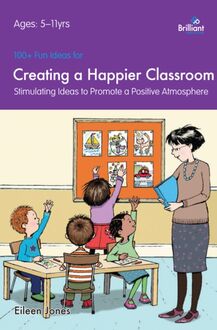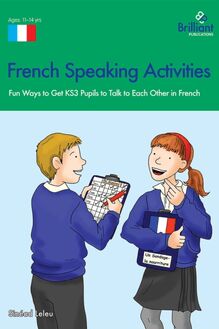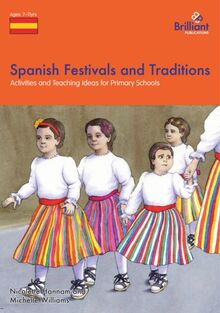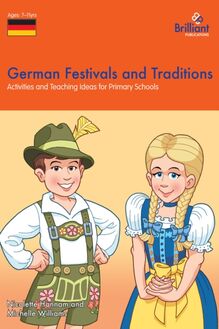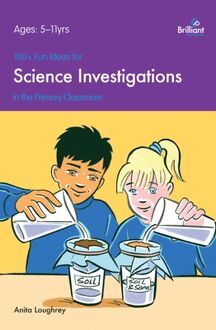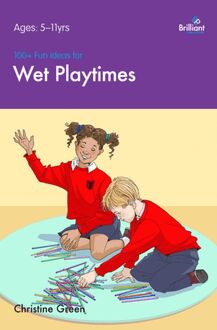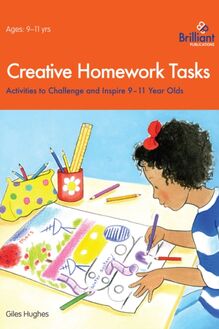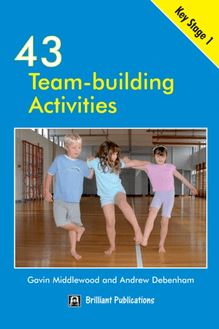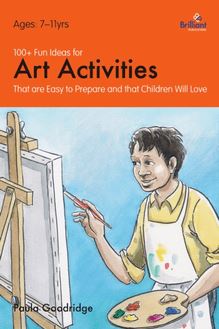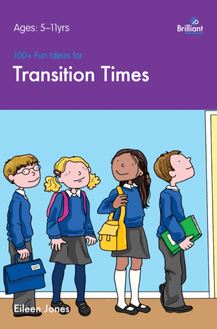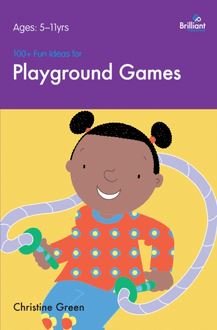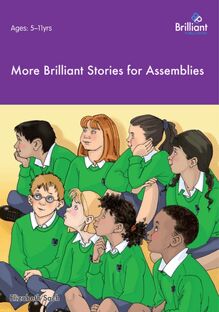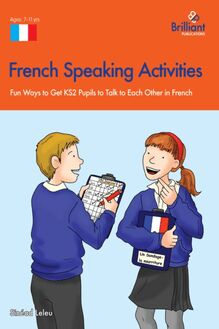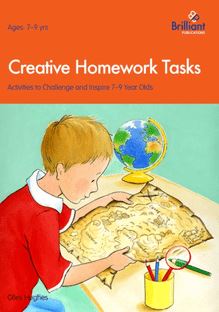100+ Fun Ideas for Science Investigations , livre ebook
153
pages
English
Ebooks
2012
Vous pourrez modifier la taille du texte de cet ouvrage
Obtenez un accès à la bibliothèque pour le consulter en ligne En savoir plus
Découvre YouScribe en t'inscrivant gratuitement
Découvre YouScribe en t'inscrivant gratuitement
153
pages
English
Ebooks
2012
Vous pourrez modifier la taille du texte de cet ouvrage
Obtenez un accès à la bibliothèque pour le consulter en ligne En savoir plus
Publié par
Date de parution
04 mai 2012
Nombre de lectures
2
EAN13
9780857475367
Langue
English
Publié par
Date de parution
04 mai 2012
Nombre de lectures
2
EAN13
9780857475367
Langue
English
Title Page
100+ Fun Ideas for Science Investigations
in the Primary Classroom
Anita Loughrey
Copyright Page
Published by Brilliant Publications
Unit 10, Sparrow Hall Farm
Edlesborough, Dunstable
Bedfordshire, LU6 2ES, UK
e-mail: info@brilliantpublications.co.uk
Website: www.brilliantpublications.co.uk
Digital edition converted and distributed in 2012 by
Andrews UK Limited
www.andrewsuk.com
The name Brilliant Publications and the logo are registered trademarks.
Written by Anita Loughrey
Illustrated by Pat Murray
© Text Anita Loughrey 2009
© Design Brilliant Publications 2009
First printed and published in the UK in 2009
The right of Anita Loughrey to be identified as the author of this work has been asserted by herself in accordance with the Copyright, Designs and Patents Act 1988.
All rights reserved. No part of this publication may be reproduced, stored in a retrieval system or transmitted in any form or by any means, electrical, mechanical, photocopying, recording or otherwise, without the prior written permission of the publisher.
Preface
How can you teach the basics of sound scientific investigation, while keeping your endeavours fun and relevant? That dilemma has motivated me to create this book, which is full of a huge range of exciting ideas for science classroom experiments, all of which have been tried and tested over my 17 years as a primary school teacher.
With the help of this book, children are encouraged to: Pose questions Make predictions Decide what evidence to collect Design a fair test Observe Record these observations appropriately and accurately Indicate whether a prediction was valid Explain their findings in scientific terms
The book comprises three main units, with sub-sections as follows: Life processes and living things Humans and other animals Living things in their environment Materials and their properties Grouping and classifying Physical processes Light and its properties Sound and its properties Forces and motion Electricity
The activities require a minimum of preparation and use only the simplest of science equipment. As with all practical activities, safety is of utmost importance, and safety recommendations have been added where relevant. The variety of activities support the opportunity to develop your children’s skills of scientific enquiry. So use them, adapt them, make them your own - but above all, enjoy them.
Anita Loughrey
Introduction
Group work
The majority of the investigations in this book suggest that children should work with a partner or in small groups. This will allow the children to share their experiences and to consider different points of view and solutions. I strongly believe group co-operation helps to develop children’s social skills, and in particular those of shared leadership, communication, trust and conflict management. This is an important step towards the children’s development into mature and responsible citizens.
Try to avoid social stereotypes such as boys manipulating materials and girls recording results. By careful observation of the groups’ interactions, you can ensure individual children participate in all aspects of the investigations. I suggest you keep a record of the groups the children have worked in, so that by the end of the academic year each child has worked with as many others as possible.
Questioning
The questions you ask are very important for reinforcing the scientific concepts you are trying to teach and in helping each child to think carefully and clarify their own ideas. Allow time for them to think before they answer, and listen carefully to their responses so that you can build on their understanding by asking more questions to highlight scientific facts.
Science is all about asking questions about what is happening and finding the answers in a safe and logical way. This is why each investigation has been devised with a specific question for the children to answer.
Observation
Curiosity is the key to science. It is the desire to know why things happen and how both living and non-living things work. Therefore, science involves careful observation of what is going on around us.
Before each science investigation is conducted, each child should make a prediction about what they think will happen. This is good practice.
Emphasize how important it is to make careful observations and to keep accurate records of what happens during their investigations. The easiest way for them to record what they have done is to write their observations straight onto a chart. Such charts are useful in helping the children make their findings clear in an easy and immediately understandable way. This is why examples of charts, which could be used and adapted by the children, have been included in the book.
I have found young children often mix up results and conclusion. It is necessary to explain that the results are simply a record of their observations, which can be displayed by charts and graphs. The conclusion is what these observations tell us about the investigation. It is a good idea to start the conclusion with whether or not their prediction was correct. Talk about/discuss and encourage them to decide if their investigations were fair and how they could be improved.
Planning
The secret of carrying out meaningful investigations is to ensure careful planning.
Opportunities have been provided in this resource book for the children to devise and plan their own investigations. It is important to emphasize that, when they are planning an experiment, only one variable should change at a time; everything else must be left the same to ensure it is a fair test, so their conclusions will be valid.
Life Processes and Living Things
Humans and Other Animals
Ourselves
1. Can you recognize objects from touch?
You will need: box or bag; blindfold; selection of objects young children would recognize (e.g. wet sponge, toy car, teddy, plastic brick, crayons, ice, stone etc); piece of fabric large enough to cover objects not in the bag or box. Allow each group to secretly choose a selection of three or four objects to be placed in the box or bag at random. Each group should challenge another group to recognize the chosen objects. Encourage the groups to take it in turns to place an object into the bag or box. Remind the children to keep all objects hidden. Blindfold each person in the group in turn and let them feel the object. Allow them to have three guesses to find out what their allocated object is before they are shown it. Which group recognized the most objects correctly from touch alone?
Talk about/discuss: Ask the children what clues they used to recognize each object. Explain that there are tiny nerves in our skin that tell us if surfaces are rough or smooth, hard or soft, wet or dry and hot or cold.
2. Can you recognize things from smell?
You will need: pots with lids (e.g. film cases); selection of items that smell strong and that young children would recognize (e.g. vinegar, onion, lemon, chocolate); several sheets of A1 paper; marker pens. Prepare a selection of different-smelling pots before the lesson begins. Label the pots 1, 2, 3 etc and have enough pots for every group to have one set each, with the same item in each corresponding pot. Suggest they take it in turns to sniff each pot and write or draw what they think they can smell. Encourage each group to record their guesses for each pot on large sheets of paper. Allow time for them to discuss each pot and come to a group consensus. At the end of the session, tell the children what was in each pot and see how many got each item correct.
Talk about/discuss: Ask the children if each pot smelt a lot different. Did they recognize all the smells? Explain that the sense of smell is strongest at birth. This is so that babies can recognize their mother before their eyesight has fully developed.
Safety: Do not forget to ask parents/carers if the children have any allergies before allowing the children to sniff/touch the pots.
3. Is the tallest person the oldest?
You will need: tape measure; metre ruler; chalk; large pieces of paper or playground. In pairs, ask the children to draw around themselves on large sheets of paper. (If it’s a nice day, they could draw around themselves outside on the playground using chalk.) Encourage them to measure each other’s outlines using non-standard measures such as lengths in feet, hands, spans, books, etc. Some children may be ready to use standard measures with tape measure and rulers. Compare their measured heights. Discuss who are the tallest children and line them up in order of their birthdays. Remember, the oldest children in the class will be those with their birthdays in September. Also be aware that some children may be sensitive about their height.
Talk about/discuss: Have a class discussion about the subject. Were the oldest children in the class the tallest? Was this what was expected? Compare their findings with their initial hypothesis.
More ideas: The data collected could be used to construct a simple ICT database.
4. Are everybody’s hands the same?
You will need: ruler; coloured crayons; paint/ink. In small groups, the children should examine each other’s hands. Are the lines on the palms of their hands the same? Encourage the children to u
